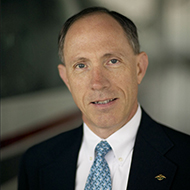 Aging Gracefully, Flying Safely is the name of the new Air Safety Institute online course that looks at how we fly as we age (www.airsafety institute.org/aging). It’s no secret that the average age of pilots has been climbing as inexorably as the national debt. While AOPA and other GA groups, such as EAA, are working to bring new and younger pilots into the fold, many of us have been flying for decades and would like to continue. But the safety statistics are not always kind.
Aging Gracefully, Flying Safely is the name of the new Air Safety Institute online course that looks at how we fly as we age (www.airsafety institute.org/aging). It’s no secret that the average age of pilots has been climbing as inexorably as the national debt. While AOPA and other GA groups, such as EAA, are working to bring new and younger pilots into the fold, many of us have been flying for decades and would like to continue. But the safety statistics are not always kind.
Correlation does not imply causality, which is the statistician’s way of saying, “It ain’t necessarily age that’s the problem.” Old pilots may fly more than young ’uns because of extra time and finances, so a higher level of exposure could easily translate to a lower accident rate but more crashes. Conversely, they could be flying less, which means the problem is real but there’s no easy way to get denominator data.
We’ve all observed older drivers who make way too many mistakes and are a hazard to all. Their aeronautical equivalent should not be flying. But aging is an intensely personal issue, and your mileage may vary—that’s what makes this discussion so difficult and emotional. One person’s 80 is another’s 60, and vice versa.
No one likes to be told they’re losing it, yet time marches on for most of us who aren’t felled by a catastrophic physiological event. Some take the attitude that “I’m twice as good as I never was,” while others are a bit more realistic on how time affects cognitive skills, physical skills, eyesight, and hearing—all essential to safe flight. The NTSB conducted a study a few years back and noted that older and highly experienced pilots compensated by drawing on that vast storehouse of knowledge they’ve built up over a lifetime of surviving the occasional mistake. It’s the equivalent of developing resistance to infectious diseases. Some pilots who learned to fly late in life and are theoretically mature are, unfortunately, old rookies. However, while many older folks may not learn as quickly as the young, they are cautious and thorough—good aeronautical traits. Did I say this was a variable thing?
So how better to learn about how older pilots think, act, and fly successfully than to discuss it with a bunch of older pilots? You can hear their interviews and techniques for coping with age-related issues in ASI’s course.
Here are three old pilot stories: Fred was a Marine combat pilot flying the F4U Corsair in World War II. That was the aircraft in the old TV series Baa, Baa, Black Sheep flown by “Pappy” Boyington. Fred was only 20-something when he went to war in the Pacific and came back with some amazing tales. Nothing he did afterward, for more than 60 years, could compare with the adrenaline rush of strafing a target, being shot at, and living to tell about it. Fred had a well-loved Mooney 201 when he lived next door to me and flew IFR regularly. With his childhood sweetheart, they visited old friends all over the East Coast.
We talked flying regularly, and Fred asked me to give him a flight review. He was a bit rusty on the rules but his basic flight skills and judgment were very good. Toward the end of the review I gave him the obligatory engine-out landing, with an airport nearby. With a bit of coaching he got through it, but he knew I had helped, and it bothered him. He met the private pilot practical test standards, which is my criteria for passing a review, but Fred stopped flying IFR shortly afterward. About eight months later the Mooney was up for sale. I asked why, and he said that it was time—he knew, inside, that he wasn’t flying to his own standard.
Now a not-so-positive story: An elderly gentleman flying a fixed-gear single visited AOPA headquarters and had filed an IFR flight plan to the south, departing around the west side of the Class B airspace (this was before the DC SFRA.) The weather was decent VFR. One of our staffers, a former air traffic controller, happened to be listening on the clearance delivery frequency as the pilot was trying to sort through the completely revised clearance that ATC had provided, taking him around the east side of the Class B.
The synapses just weren’t cooperating, and he couldn’t quite understand what the controllers wanted. He taxied back in, and I asked our staff member to meet him on the ramp to offer some assistance. They came inside, briefed, and the pilot went back to try again. The second time was no better, as ATC now offered a west side departure. The pilot departed VFR, and we heard no more. Here was a case of someone holding on too long—at least for that level of operation.
Another friend, Lloyd, now well into his 80s, also flew during World War II, in B–17s and B–29s. He had a very successful business career and flew all manner of high-performance aircraft and twins. His last high flier was a Cirrus SR22. Transitioning and keeping up with the glass was a chore—especially since his travels didn’t take him as far from home or as often. He downsized to an LSA. As Lloyd puts it, it keeps him aloft and out of the house.
English philosopher Francis Bacon said, “I will never be an old man. To me, old age is always 15 years older than I am.” If you’re into the golden years, or perhaps it’s still 15 years off, take the Air Safety Institute course (it’s free) for some solid guidance on flying safely for as long as you can.
AOPA Foundation President Bruce Landsberg began his career in the U.S. Air Force.



